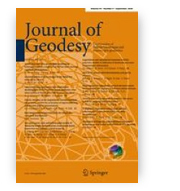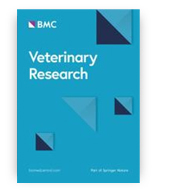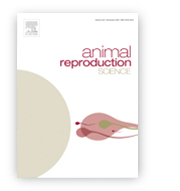The effect of function‑based and voxel‑based tropospheric tomography techniques on the GNSS positioning accuracy
Saeid Haji‑Aghajany, Yazdan Amerian, Sandra Verhagen, Witold Rohm, Harald Schuh
Journal of Geodesy
 Tropospheric wet delay, the main source of which is water vapor, is one of the major factors affecting the accuracy of positioning techniques using microwave. Tropospheric tomography is a powerful method to reconstruct the water vapor content in four-dimensional (4D) space. This paper studies the effect of using function-based and voxel-based tropospheric tomography methods on the positioning accuracy. This examination is performed on the static and kinematic positioning modes using Global Navigation Satellite Systems (GNSS) stations under different weather conditions. After validating the results of tomography methods using radiosonde observations, the tomography-based positioning solutions, including function-based and voxel-based approaches, are compared with the positions obtained using tropospheric models. The results of two GPS stations show that the accuracy increases when applying tomography approaches. The function-based tomography is able to increase the accuracy of the up component of the static and kinematic modes by about 0.42 and 0.79 cm, respectively, compared to the voxel-based method. In addition, the use of the function-based tropospheric tomography can decrease the convergence time of the kinematic Precise Point Positioning (PPP) solution.
Tropospheric wet delay, the main source of which is water vapor, is one of the major factors affecting the accuracy of positioning techniques using microwave. Tropospheric tomography is a powerful method to reconstruct the water vapor content in four-dimensional (4D) space. This paper studies the effect of using function-based and voxel-based tropospheric tomography methods on the positioning accuracy. This examination is performed on the static and kinematic positioning modes using Global Navigation Satellite Systems (GNSS) stations under different weather conditions. After validating the results of tomography methods using radiosonde observations, the tomography-based positioning solutions, including function-based and voxel-based approaches, are compared with the positions obtained using tropospheric models. The results of two GPS stations show that the accuracy increases when applying tomography approaches. The function-based tomography is able to increase the accuracy of the up component of the static and kinematic modes by about 0.42 and 0.79 cm, respectively, compared to the voxel-based method. In addition, the use of the function-based tropospheric tomography can decrease the convergence time of the kinematic Precise Point Positioning (PPP) solution.
DOI:10.1007/s00190-021-01528-2
Inter and intraspecies comparison of the level of selected bacterial phyla in in cattle and sheep based on feces
Natalia Szeligowska, Paulina Cholewińska, Katarzyna Czyż, Konrad Wojnarowski, Marzena Janczak
BMC Veterinary Research
 Background The microbiome of the digestive tract of ruminants contains microbial ecosystem that is affected by both environmental and genetic factors. The subject of this study concerns the influence of selected genetic factors, such as species of animals and “host” individual differences on the digestive tract microbiome composition. The results show the core microbiological composition (Firmicutes and Bacteroidetes) of ruminants digestive tract (based on feces) depending on breed and “host”. The Bacteroidetes and Firmicutes phyla are the most abundant in ruminants digestive tract. The aim of the study was to determine the differences prevalence level of Bacteroidetes and Firmicutes phyla in feces of Charolaise cattle and Polish Olkuska Sheep with respect to intra- and inter-species variability. Results The research group in the experiment consisted of animals at the age of 3 months kept in the same environmental conditions – rams of Polish Olkuska Sheep (n = 10) and Charolaise bulls (n = 10). Feces were collected individually from each animal (animals without disease symptoms were selected), living on the same environmental conditions. The analysis of the results in terms of species showed differences in the Firmicutes phylum level and Lactobacillaceae family between rams and bulls. Subsequently, the analysis performed for the “host effect” showed differentiation in the levels of the Bacteroidetes and Firmicutes phyla between individuals in a group and also between the groups. Conclusion The obtained results suggest that, apart from the diet and the environment, the species and the individual host are equally important factors influencing the microbiological composition of the digestive system of ruminants.
Background The microbiome of the digestive tract of ruminants contains microbial ecosystem that is affected by both environmental and genetic factors. The subject of this study concerns the influence of selected genetic factors, such as species of animals and “host” individual differences on the digestive tract microbiome composition. The results show the core microbiological composition (Firmicutes and Bacteroidetes) of ruminants digestive tract (based on feces) depending on breed and “host”. The Bacteroidetes and Firmicutes phyla are the most abundant in ruminants digestive tract. The aim of the study was to determine the differences prevalence level of Bacteroidetes and Firmicutes phyla in feces of Charolaise cattle and Polish Olkuska Sheep with respect to intra- and inter-species variability. Results The research group in the experiment consisted of animals at the age of 3 months kept in the same environmental conditions – rams of Polish Olkuska Sheep (n = 10) and Charolaise bulls (n = 10). Feces were collected individually from each animal (animals without disease symptoms were selected), living on the same environmental conditions. The analysis of the results in terms of species showed differences in the Firmicutes phylum level and Lactobacillaceae family between rams and bulls. Subsequently, the analysis performed for the “host effect” showed differentiation in the levels of the Bacteroidetes and Firmicutes phyla between individuals in a group and also between the groups. Conclusion The obtained results suggest that, apart from the diet and the environment, the species and the individual host are equally important factors influencing the microbiological composition of the digestive system of ruminants.
DOI:10.1186/s12917-021-02922-w
Chromosome abnormalities in dogs with disorders of sex development (DSD)
Izabela Szczerbal, Wojciech Niżański, Stanisław Dzimira, Joanna Nowacka-Woszuk, Joanna Stachecka, Janusz Bieżyński, Zuzanna Ligocka, Dariusz Jagodka, Hanna Fabian-Kurzok, Marek Świtoński
Animal Reproduction Science
 Disorders of sex development (DSD) caused by chromosome abnormalities are rarely diagnosed in dogs. In this report, there is a focus on five DSD cases in which the dogs had abnormal karyotypes. All animals were recognized by owners as females, however, these dogs had a large number of reproductive defects. Among these were abnormal external genitalia such as an enlarged clitoris, abnormal development of the labia, abnormal location of the vulva and urethral orifice, and other abnormalities were observed in four dogs. Gonadal histology assessments were conducted on three dogs and there were diagnoses of the presence of an ovary, inactive testes, and ovotestis with calcification in ovarian follicles. Results from cytogenetic analysis indicated there were the following karyotypes: (a) X trisomy in a mosaic form (79,XXX/78,XX); (b) Robertsonian translocation in a mosaic form (77,XX,rob/78,XX); (c) nonmosaic X/autosome translocation (78,X,t(X;A)); (d) X/autosome translocation in a mosaic form (78,X,t(X;A)/78,XX); and (e) leukocyte chimerism (78,XX/78,XY). The findings in the present study, emphasize that cytogenetic analysis is essential for elucidating the pathogenesis of DSD in dogs.
Disorders of sex development (DSD) caused by chromosome abnormalities are rarely diagnosed in dogs. In this report, there is a focus on five DSD cases in which the dogs had abnormal karyotypes. All animals were recognized by owners as females, however, these dogs had a large number of reproductive defects. Among these were abnormal external genitalia such as an enlarged clitoris, abnormal development of the labia, abnormal location of the vulva and urethral orifice, and other abnormalities were observed in four dogs. Gonadal histology assessments were conducted on three dogs and there were diagnoses of the presence of an ovary, inactive testes, and ovotestis with calcification in ovarian follicles. Results from cytogenetic analysis indicated there were the following karyotypes: (a) X trisomy in a mosaic form (79,XXX/78,XX); (b) Robertsonian translocation in a mosaic form (77,XX,rob/78,XX); (c) nonmosaic X/autosome translocation (78,X,t(X;A)); (d) X/autosome translocation in a mosaic form (78,X,t(X;A)/78,XX); and (e) leukocyte chimerism (78,XX/78,XY). The findings in the present study, emphasize that cytogenetic analysis is essential for elucidating the pathogenesis of DSD in dogs.
DOI:10.1016/j.anireprosci.2021.106771
Detector-specific issues in Satellite Laser Ranging to Swarm-A/B/C satellites
Dariusz Strugarek, Krzysztof Sośnica, Radosław Zajdel, Grzegorz Bury
Measurement
 Satellite Laser Ranging (SLR) to Low Earth Orbiters (LEOs) is traditionally used to validate orbits derived by microwave techniques, e.g., Global Positioning System (GPS). For most LEOs, SLR is the only possibility to independently assess the GPS orbit quality, to calibrate onboard instruments, and to reveal otherwise unnoticed systematic errors. However, the detector-specific errors in SLR measurements may corrupt the SLR observations and derived parameters. We found that the stations employing Compensated Single-Photon Avalanche Diode (CSPAD) detectors are characterized by the lowest, 15 and 21 mm root-mean-square residuals for reduced-dynamic and kinematic orbits, respectively, and show almost no dependency on the satellite nadir angle nor the observation acquisition time, as opposed to stations with Multi-Channel Plates (MCP) and Photomultiplier Tube (PMT) detectors. SLR observations to Swarm-A/B/C can also be used for the determination of SLR station coordinates characterized by 27, 15, 18 mm interquartile range repeatability for the Up, North, and East components, respectively.
Satellite Laser Ranging (SLR) to Low Earth Orbiters (LEOs) is traditionally used to validate orbits derived by microwave techniques, e.g., Global Positioning System (GPS). For most LEOs, SLR is the only possibility to independently assess the GPS orbit quality, to calibrate onboard instruments, and to reveal otherwise unnoticed systematic errors. However, the detector-specific errors in SLR measurements may corrupt the SLR observations and derived parameters. We found that the stations employing Compensated Single-Photon Avalanche Diode (CSPAD) detectors are characterized by the lowest, 15 and 21 mm root-mean-square residuals for reduced-dynamic and kinematic orbits, respectively, and show almost no dependency on the satellite nadir angle nor the observation acquisition time, as opposed to stations with Multi-Channel Plates (MCP) and Photomultiplier Tube (PMT) detectors. SLR observations to Swarm-A/B/C can also be used for the determination of SLR station coordinates characterized by 27, 15, 18 mm interquartile range repeatability for the Up, North, and East components, respectively.
DOI:10.1016/j.measurement.2021.109786









